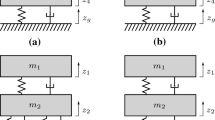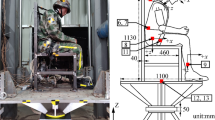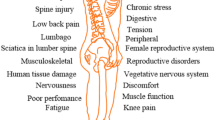Abstract
This work shows how different occupant biodynamic modeling techniques are integrated in a rotorcraft design environment and discusses the resulting differences in comfort assessment. Three modeling techniques, that are used for biodynamic characterization, are considered: lumped parameter, finite element and multibody dynamics. These models are identified for the same gender, age, weight and height, and then integrated into a virtual helicopter environment with a seat–cushion interface. A generic helicopter model is used to demonstrate the approach. For each of the three techniques, the vertical acceleration levels at the human–helicopter interface, as required by vibration regulations, and at the head are evaluated up to 30 Hz. At a first glance, it is observed that the lumped parameter is the easiest to implement in terms of model set-up. However, the use of lumped parameter models is limited to the population groups that they are identified from, and thus are not as flexible as the finite element and multibody ones in develo** biodynamic models for individuals of an arbitrary population percentile. Furthermore, through numerical analysis, it is found that the differences are not very significant in terms of accelerations at the human–seat interface. Therefore, for comfort-related issues, the use of more complex models is not justified, unless complicated comfort assessments other than human interface accelerations are required. On the other hand, it is observed that the spine dynamics can play a significant role in estimating the acceleration of head; therefore, the sophisticated finite element and multibody dynamics models redeem their higher modeling cost and computation time when the head–neck health of occupants is considered.











Similar content being viewed by others
Notes
http://www.mbdyn.org/, last retrieved in October 2018.
References
Johnson, W.: Rotorcraft Aeromechanics. Cambridge University Press, New York (2013)
Harrer, K.L., Yniguez, D., Maria, M.M., Ellenbecker, D., Estrada, N., Geiger, M.: Whole body vibration exposure for MH-60s pilots. In: 43th SAFE, Utah (2005)
Rath, T., Fichter, W.: A closer look at the impact of helicopter vibrations on ride quality. In: AHS 73rd Annual Forum, Forth Worth, May 9–11 (2017)
Law, A.H., Beatty, H.E.W., Keillor, J., Wickramasinghe, V.: Pilot head and neck response to helicopter whole body vibration and head-supported mass. In: AHS 73rd Annual Forum, Forth Worth (2017)
Johnson, W.: A history of rotorcraft comprehensive analyses. In: TP 2012-216012, NASA (2012)
Kumbhar, P.B., Xu, P., Yang, J.: A literature survey of biodynamic models for whole body vibration and vehicle ride comfort. In: 2012 ASME DETC, Chicago, August 12–15 (2012)
Matsumoto, Y., Griffin, M.J.: Comparison of biodynamic responses in standing and seated human bodies. J. Sound Vib. 238(4), 691–704 (2000)
Griffin, M.J.: The validation of biodynamic models. Clin. Biomech. 16, S81–S92 (2001)
Mohajer, N., Abdi, H., Nahavandi, S., Nelson, K.: Directional and sectional ride comfort estimation using an integrated human biomechanical-seat foam model. J. Sound Vib. 403, 38–58 (2017)
Kitazaki, S., Griffin, M.J.: A modal analysis of whole-body vertical vibration, using a finite element model of the human body. J. Sound Vib. 200(1), 83–103 (1997)
Masarati, P., Quaranta, G., Zanoni, A.: Dependence of helicopter pilots’ biodynamic feedthrough on upper limbs’ muscular activation patterns. Proc. IMechE Part K: J. Multi-body Dyn. 227(4), 344–362 (2013). https://doi.org/10.1177/1464419313490680
Masarati, P., Muscarello, V., Quaranta, G.: Linearized aeroservoelastic analysis of rotary-wing aircraft. In: 36th European Rotorcraft Forum, pp. 099.1–10, Paris, September 7–9 (2010)
Masarati, P., Muscarello, V., Quaranta, G., Locatelli, A., Mangone, D., Riviello, L., Viganò, L.: An integrated environment for helicopter aeroservoelastic analysis: the ground resonance case. In: 37th European Rotorcraft Forum, pp. 177.1–12, Gallarate, September 13–15 (2011)
Craig Jr., R.R., Bampton, M.C.C.: Coupling of substructures for dynamic analysis. AIAA J. 6(7), 1313–1319 (1968)
Choi, Y.-T., Wereley, N.: Biodynamic response mitigation to shock loads using magnetorheological helicopter crew seat suspensions. J. Aircr. 42(5), 1288–1295 (2005)
Bai, X.-X., Shi-Xu, X., Cheng, W., Qian, L.-J.: On 4-degree-of-freedom biodynamic models of seated occupants: lumped-parameter modeling. J. Sound Vib. 402, 122–141 (2017)
Boileau, P.É., Rakheja, S.: Whole-body vertical biodynamic response characteristics of the seated vehicle driver: measurement and model development. Int. J. Ind. Ergon. 22(6), 449–472 (1998)
Kitazaki, S., Griffin, M.J.: Resonance behaviour of the seated human body and effects of posture. J. Biomech. 31(2), 143–149 (1998). https://doi.org/10.1016/S0021-9290(97)00126-7
Belytschko, T., Privitzer, E.: Refinement and validation of a three dimensional head-spine model. Technical Report Contract AF-33615-76-C-0506, Air Force Systems Command, Wright-Patterson Air Force Base, Ohio (1978)
Valentini, P.P., Pennestrì, E.: An improved three-dimensional multibody model of the human spine for vibrational investigations. Multibody Syst. Dyn. 36(4), 363–375 (2016). https://doi.org/10.1007/s11044-015-9475-6
Masarati, P., Morandini, M., Mantegazza, P.: An efficient formulation for general-purpose multibody/multiphysics analysis. J. Comput. Nonlinear Dyn. 9(4), 041001 (2014). https://doi.org/10.1115/1.4025628
Valentini, P.P.: Virtual dummy with spine model for automotive vibrational comfort analysis. Int. J. Veh. Design 51(3–4), 261–277 (2009). https://doi.org/10.1504/IJVD.2009.027956
Valentini, P.P.: Modeling human spine using dynamic spline approach for vibrational simulation. J. Sound Vib. 331(26), 5895–5909 (2012). https://doi.org/10.1016/j.jsv.2012.07.039
Masarati, P., Quaranta, G., Zanoni, A.: A detailed biomechanical pilot model for multi-axis involuntary rotorcraft-pilot couplings. In: 41st European Rotorcraft Forum, Munich, September 1–4 (2015)
Masarati, P., Quaranta, G., Bernardini, A., Guglieri, G.: Voluntary pilot action through biodynamics for helicopter flight dynamics simulation. AIAA J. Guid. Control Dyn. 38(3), 431–441 (2015)
Pooni, J.S., Hukins, D.W.L., Harris, P.F., Hilton, R.C., Davies, K.E.: Comparison of the structure of human intervertebral discs in the cervical, thoracic and lumbar regions of the spine. Surg. Radiol. Anat. 8(3), 175–182 (1986)
Yoganandan, N., Kumaresan, S.C., Voo, L., Pintar, F.A., Larson, S.J.: Finite element modeling of the c4–c6 cervical spine unit. Med. Eng. Phys. 18(7), 569–574 (1996)
Subrata, P. (ed.) Design of Artificial Human Joints and Organs. Springer, Berlin (2014). https://doi.org/10.1007/978-1-4614-6255-2
Zheng, Y.-P., Mak, A.F.T.: An ultrasound indentation system for biomechanical properties assessment of soft tissues in-vivo. IEEE Trans. Biomed. Eng. 43(9), 912–918 (1996)
Zanoni, A., Masarati, P.: Geometry generation and benchmarking of a complete multibody model of the upper limb. In: Fourth Joint International Conference on Multibody System Dynamics—IMSD 2016, Montréal, May 29–June 2 (2016)
Shi, X., Cao, L., Reed, M., Rupp, J., Hoff, C., Hoff, C., Hu, J.: A statistical human rib cage geometry model account for variations by age, sex, stature and body mass index. J. Biomech. 47, 2277–2285 (2014)
ISO. ISO mechanical vibration and shock—evaluation of human exposure to whole-body vibration. Technical Report ISO2631-1, ISO (1997)
Measurement and evaluation of human exposure to whole-body mechanical vibration. Technical Report BS-6841, British Standard Institution (1987)
Griffin, M.J.: A comparison of standardized methods for predicting the hazards of whole-body vibration and repeated shocks. J. Sound Vib. 215(4), 883–914 (1998)
Mandapuram, S., Rakheja, S., Boileau, P.É., Maeda, S.: Apparent mass and head vibration transmission responses of seated body to three translational axis vibration. Int. J. Ind. Ergon. 42(3), 268–277 (2012)
Merritt, H.E.: Hydraulic Control Systems. Wiley, New York (1967)
Tamer, A., Muscarello, V., Masarati, P., Quaranta, G.: Evaluation of vibration reduction devices for helicopter ride quality improvement. Aerosp. Sci. Technol. (submitted)
Acknowledgements
This work received partial support from Leonardo Helicopter Division. The authors particularly acknowledge LHD for providing part of the data used in the analysis.
Author information
Authors and Affiliations
Corresponding author
Ethics declarations
Conflict of interest
On behalf of all authors, the corresponding author states that there is no conflict of interest.
Additional information
Publisher's Note
Springer Nature remains neutral with regard to jurisdictional claims in published maps and institutional affiliations.
Presented at the 44th European Rotorcraft Forum, Delft, The Netherlands.
Rights and permissions
About this article
Cite this article
Tamer, A., Zanoni, A., Muscarello, V. et al. Biodynamic Modeling Techniques for Rotorcraft Comfort Evaluation. Aerotec. Missili Spaz. 98, 147–158 (2019). https://doi.org/10.1007/s42496-019-00014-5
Received:
Revised:
Accepted:
Published:
Issue Date:
DOI: https://doi.org/10.1007/s42496-019-00014-5




